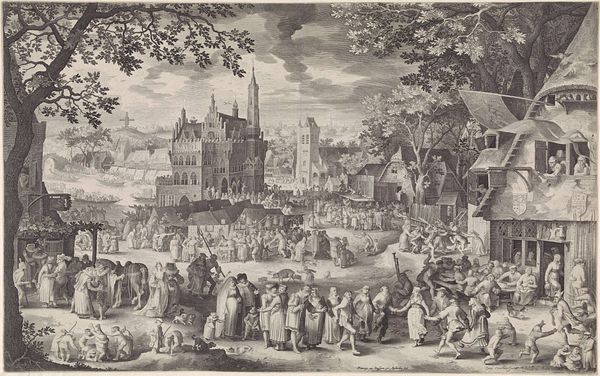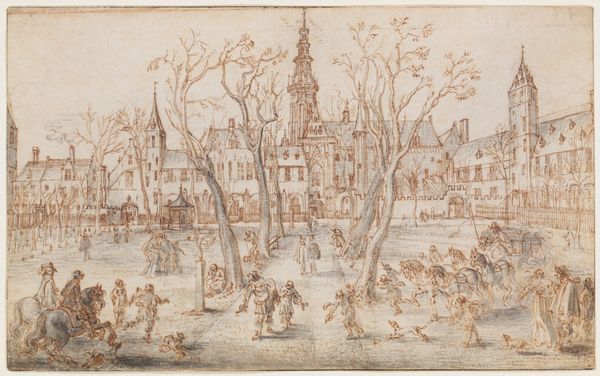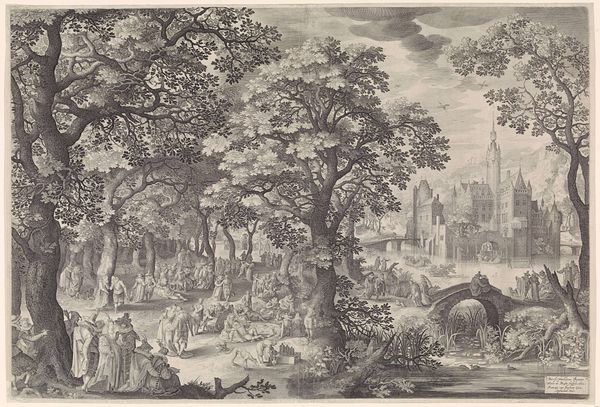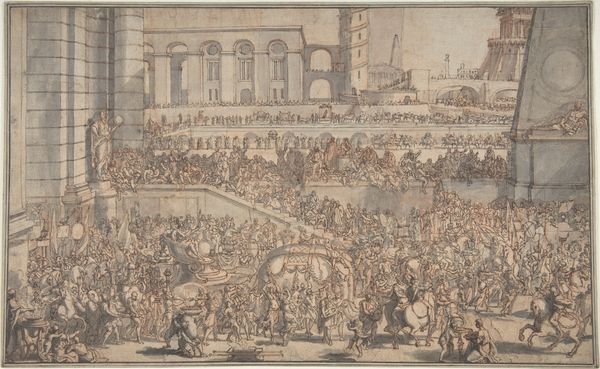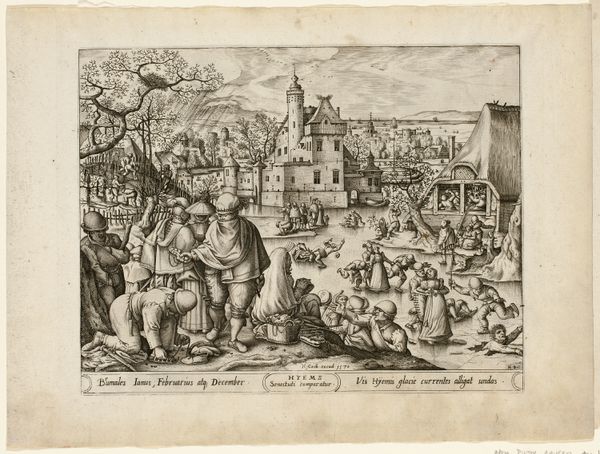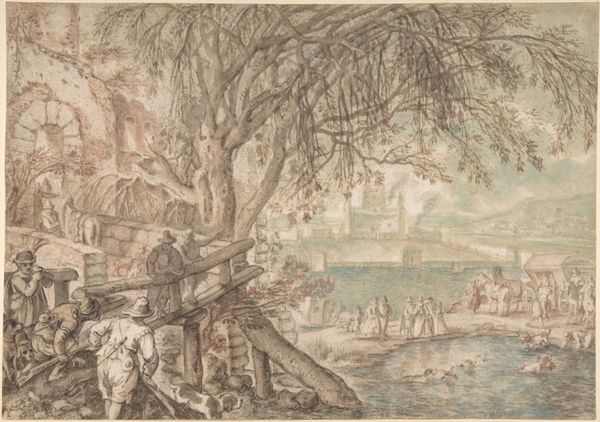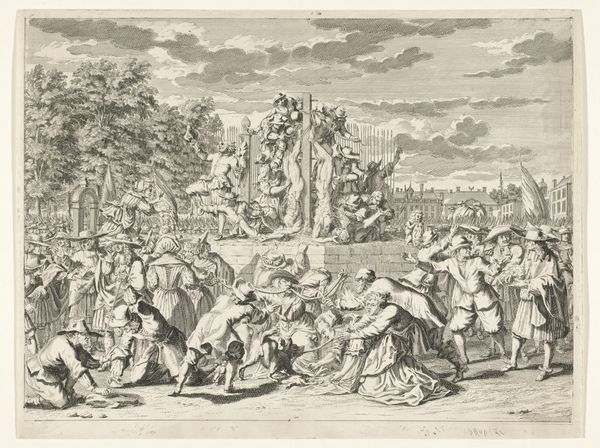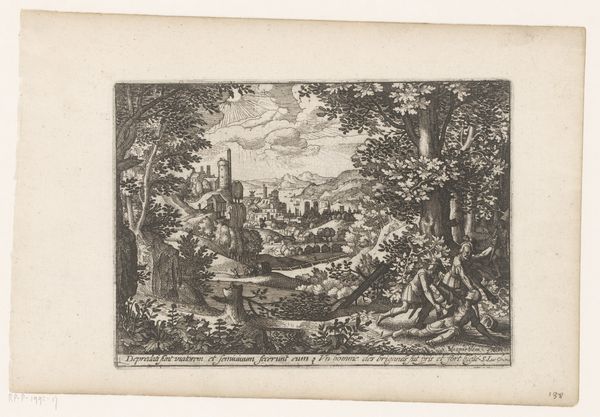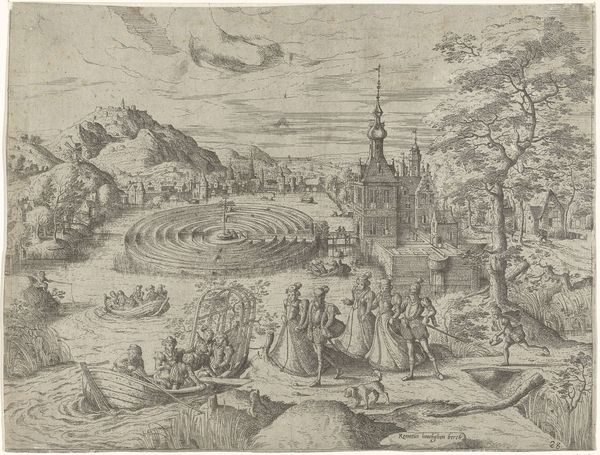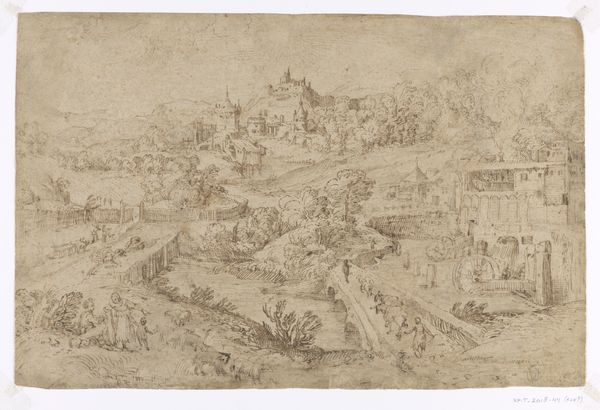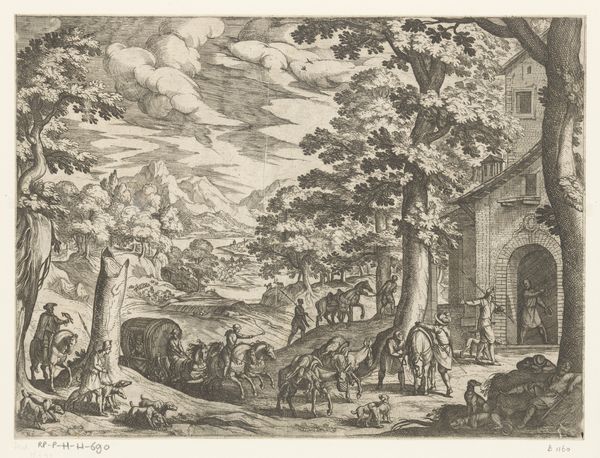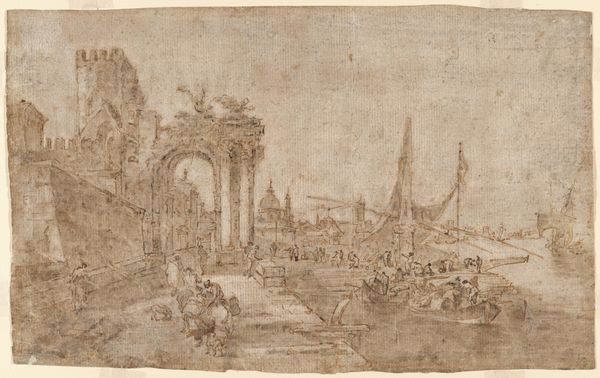
drawing, ink, pen
#
drawing
#
baroque
#
ink painting
#
landscape
#
figuration
#
ink
#
coloured pencil
#
pen
#
genre-painting
Dimensions: 450 mm (height) x 711 mm (width) (bladmaal)
Curator: Here we have David Vinckboons’ "Kermesse," created around 1602. It’s currently housed in the SMK, the National Gallery of Denmark. A lively ink and pen drawing. Editor: Immediately, I'm struck by how detailed it is, and how much it manages to convey in monochrome. There’s a palpable sense of boisterous energy in this scene. What do you think, looking at it from a historical lens? Curator: It offers us a fascinating glimpse into early 17th-century Dutch social life. "Kermesse" depicts a village fair, an important aspect of community bonding. Vinckboons’ genre scenes often captured these gatherings, reflecting the social and cultural values of the time. We need to think about class distinctions, too; who is allowed to be raucous in public spaces, and who isn't? Editor: Right. It almost feels subversive. Look at the figures seemingly reveling without any authority frowning down. It invites a broader discussion around societal expectations. How does Vinckboons portray women here, considering the patriarchal norms of the era? Curator: That's complex. Women are present, participating in the festivities, but often depicted in traditional roles or within family groups. I am interested to examine this work through the perspective of social dynamics within households to reveal power and autonomy over marginalized communities. Their agency might be limited, yet their inclusion in such a public spectacle also signifies something important about the fabric of communal life, the domestic labor required, who benefits, and from whom it’s extracted. Editor: There’s a kind of freedom that permeates it, though. The overall feeling suggests release and enjoyment, something not always represented at the time. It’s fascinating to ponder this in light of what social historians now recognize about festivals’ cathartic role. How does Vinckboons use his technique to convey this feeling? Curator: The rapid strokes and dense composition contribute to that sense of energetic chaos, a controlled chaos, shall we say. The use of perspective draws your eye deep into the scene, making the viewer a part of the revelry. And consider the landscape style - an escape! Editor: Yes, this piece speaks to me about the universal human need for communal joy and perhaps an element of rebellion and temporary disregard for social barriers, even if subtly embedded in complex historical power dynamics. Thank you for illuminating it! Curator: Indeed! And a powerful testament to the importance of re-evaluating historical documents to reveal these intersectional stories.
Comments
No comments
Be the first to comment and join the conversation on the ultimate creative platform.
